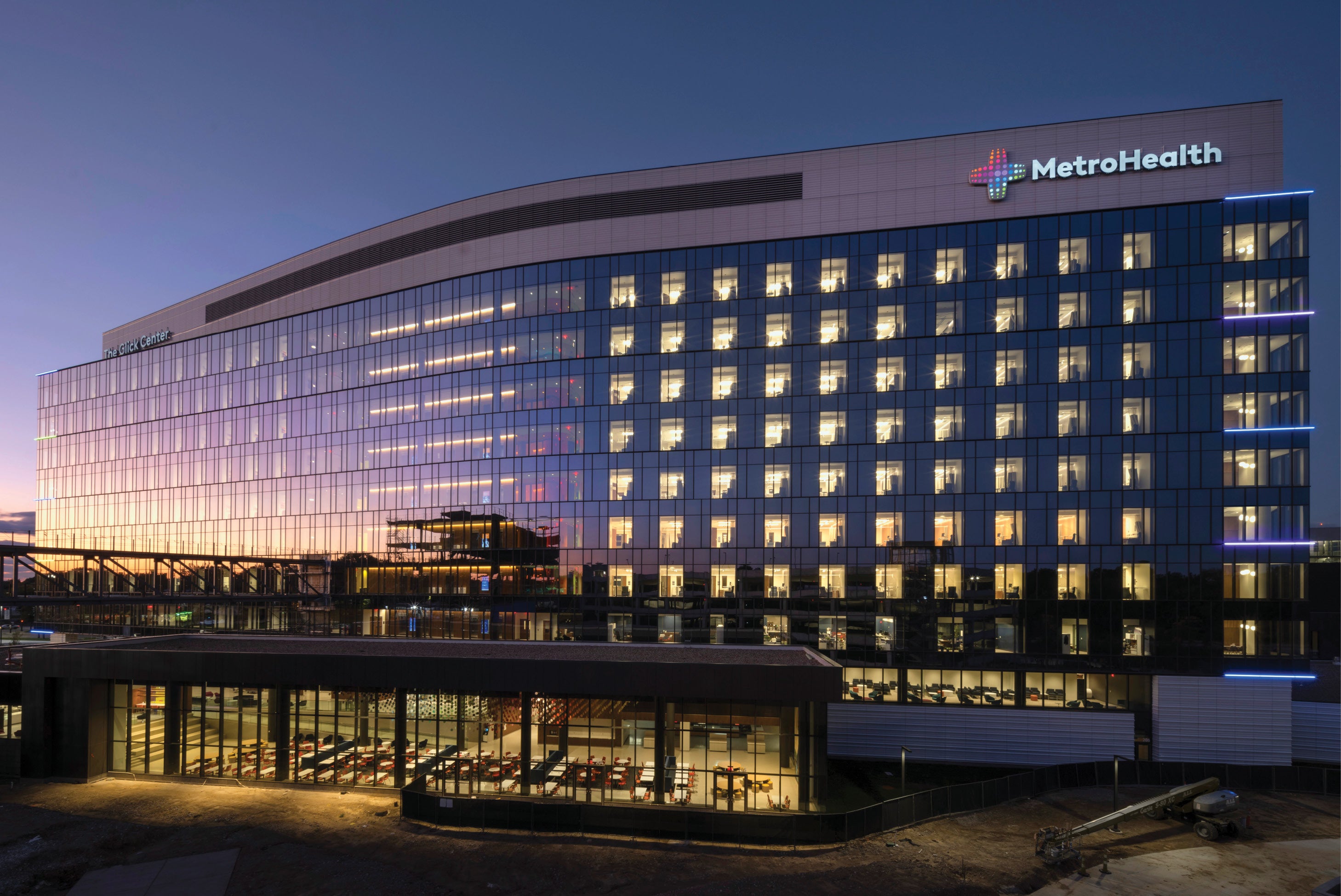Enduring community investment

Image by ©Nic Lehoux
MetroHealth’s new acute care hospital, The Glick Center, is an essential component of its transformational master plan to bring hope and healing to the community. The campus vision is rooted in equitable care, community health and research-based care within a state-of-the-art hospital in a park. HGA worked closely with MetroHealth as architect and engineer to create a beautiful, forward-thinking facility to streamline staff efficiency and improve patient care using Lean and evidence-based, data-driven planning and design.
The campus transformation and Glick Center draw inspiration from historical photos of the original hospital, set in a park. The campus was reimagined as a series of landscaped parks to support a people-oriented neighborhood, while the white terra cotta exterior facade reflects the traditional material used on the MetroHealth Hospital at the beginning of the 20th century and creates a visible beacon of hope in the community.
Entering The Glick Center from a west-facing entrance off of Scranton Road, visitors experience a two-level lobby with amenities such as a gift shop, dining area and performance space for the hospital’s Arts in Health program. Moving up into the care areas, the placement of new interventional procedure rooms, cardiac catheterization labs and endoscopy procedure rooms adjacent to the existing surgical suite created a flexible interventional platform. All-day stay patients are cared for in adaptable and universal preoperative, post-anesthesia care unit and phase II recovery spaces that respond to changing census and patient needs. Rooms feature privacy and hotellike amenities for patients and families during their stay.

Image by ©Nic Lehoux
In the bed tower, a universal inpatient platform houses 316 variable-acuity beds (including universal as well as women’s and children’s beds) for medical-surgical and intensive care in private rooms and an open core workspace — a configuration that easily adapts the use of the inpatient units for different patient acuities, such as the burn, stem cell transplant and pediatric units. This process-neutral approach allows each floor of the bed tower to accept change and advancements in technology and care delivery, ensuring MetroHealth can continue to serve the community and its mission from this building for generations to come.
MetroHealth has been nationally recognized for environmental sustainability through awards received from Practice Greenhealth. To realize its LEED and WELL Building goals, HGA led sustainability planning sessions and a resiliency assessment. Highly efficient infrastructure systems, such as a central utility plant, have resulted in significant energy savings and reduced emissions. MetroHealth is the first hospital-led certified EcoDistrict and is modeling a significant transformation in the way hospitals operate within their surrounding environments — a waterfall effect of innovative and exciting community action that is bringing hope and healing to Cleveland.
WANT TO BE FEATURED? Visit the American Society for Health Care Engineering's Architecture for Health Showcase to learn more about participating.




